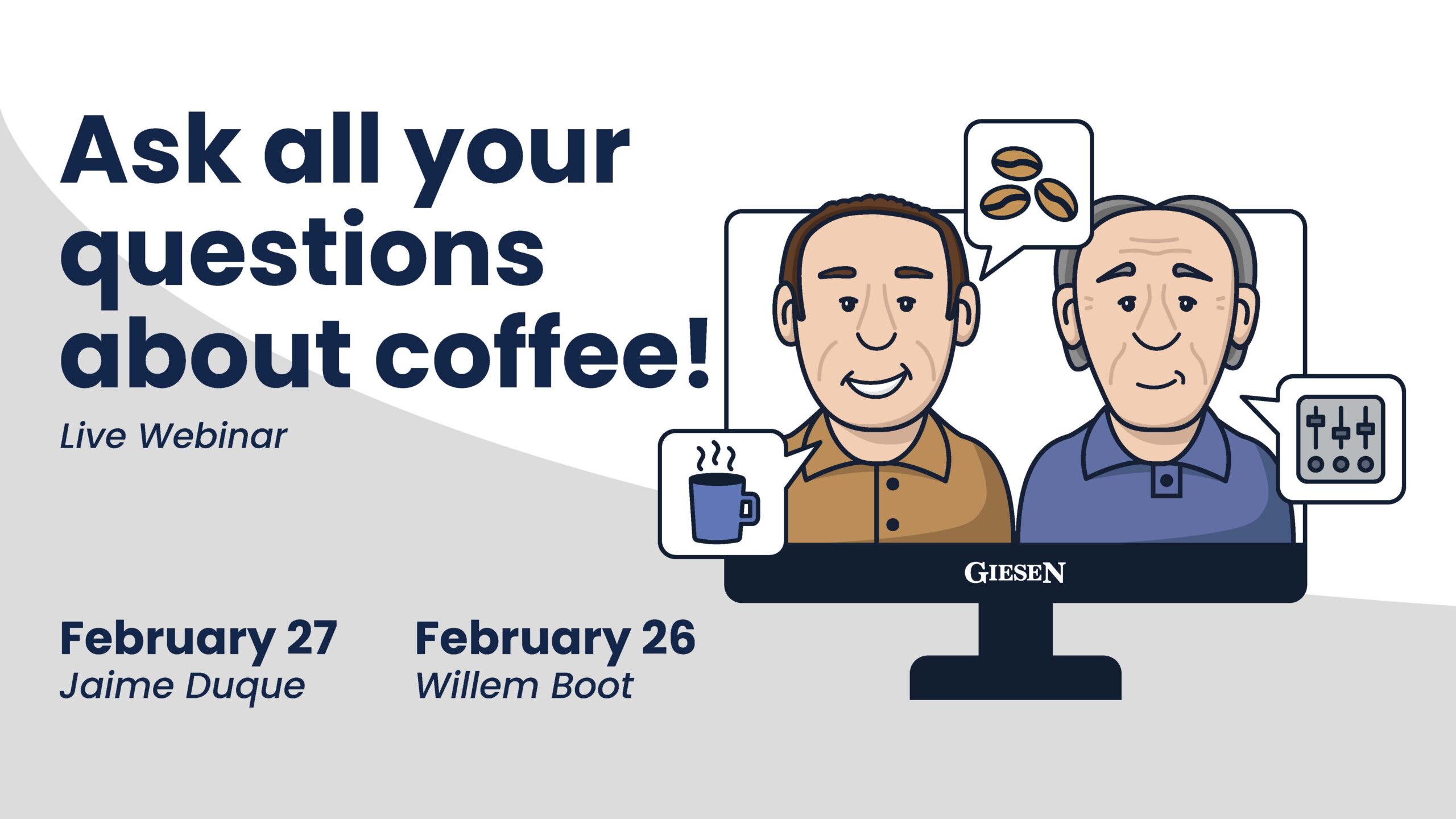This webinar #12 will focus on the Giesen Profiler. The roasting software that we developed over the last years. Willem Boot gave some background information, did a roast, and edited it with Profiler. We wrote a summary of it.
I am very happy to acknowledge that the software has become a powerful, impressive tool for roasters who operate with Giesen roasters. We know that there are various choices in terms of the roasters you seek and in the software you choose. When I compare the Giesen profiler to some of the software I would say there are two reasons why the Giesen profiler is so impressive. First, it allows you from within the profiler to operate the machine. Second, it allows you to record the profile and edit it. That’s a feature I like to explore further in today’s webinar.
This webinar is all about striving for a good roasting profile. Tools and information that can help you with this and we discuss today:
- Visual aspects of the bean
- Giesen Profiler
- Pannello di controllo
Visual aspects of the beans
Before you start roasting, it’s important to also look at the visual aspects of the bean you are roasting with. All this information you collect before roasting can be the base information you need for setting your first profile. For more information about the different bean types and the observations, you can make by looking at them, check the webinar.
Improve the profile with Giesen Profiler
Giesen Profiler gives you the possibility to record your profile and edit it afterward. I think this is a great feature. After editing, you can run the new profile. This way, you can gradually improve on the profiles that you have created and you keep on learning and improving.
The first profile I am going to do will be a profile where I go in with a heat soak for about a minute until the turning point and then I gradually bring up my burner to get it at 56 %. We will record this profile while I’m making some adjustments. And after that, we will review this profile and make some edits using the Giesen Profiler. If you like to see this, please check the webinar.

Pannello di controllo
Giesen profiler helps a lot with creating roasting profiles, but the control panel that Giesen integrated in the last four years, gives the excess to all the important relevant functions of the machine. These functions are also critical in creating roasting profiles. Let’s discuss the features.
- Charge temperature
Is a key element for any roasting profiles out there because it creates the heat and conditions to which the coffee beans will be exposed from the very first minute that the roasting starts.
- Temperature setpoint
It’s kind of a thermostat. This thermostat can either be pushed out of the way by becoming more of an overheating safety limit. Besides that, during roasting, you can also use this setpoint roasting which we have reviewed in one of our earlier webinars.
- Air temperature
- Bean temperature
- Rate of rise
The feature where the bean temperature increases every 30 seconds.
- Heat supply
The third aspect of recalibration or controlling your profile is the heat supply.
- Air pressure
Higher air pressure will typically increase the perception of acidity in the cup when a lower air pressure will typically increase the perception of sweetness in the cup. Ideally, to create unique profiles, you might want to seek two or three different settings of your air pressures during the same profile.
- Drum rotation
When I set my drum rotation speed lower, it basically changes the way the beans interact with the heat in the drum. Typically, with the lower setting of the drum rotation speed, I basically can increase my conduction heat and if I increase the drum rotation speed, I increase the confection speed. That is an interesting parameter to play with.
Check out the other Giesen blog articles and webinar summaries here.




